Autonomous testing is revolutionizing modern software testing by combining AI-based testing, machine learning in test automation, and advanced test automation frameworks to reduce manual effort and boost accuracy. Unlike traditional selenium automation or scripted test automation, autonomous software testing enables intelligent, codeless test automation that adapts in real time.
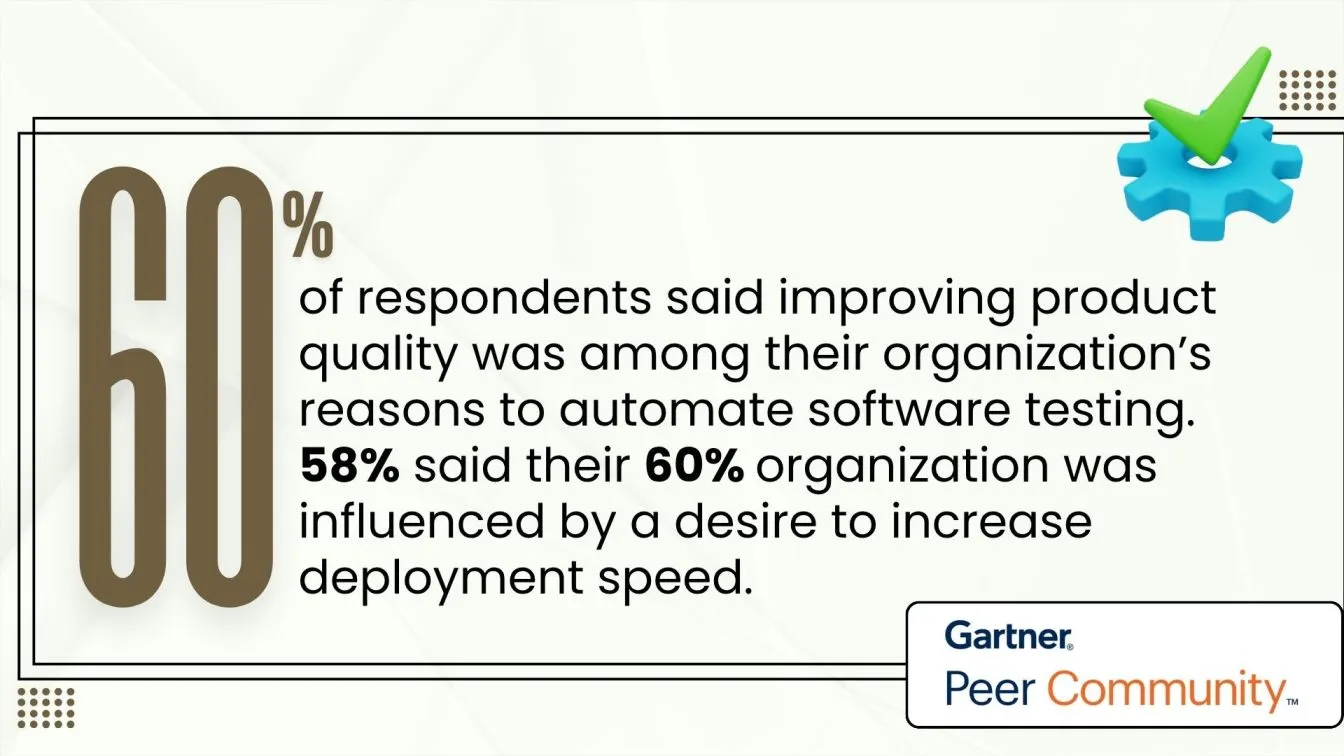
This approach supports continuous testing in DevOps, ensuring faster feedback loops and smarter defect detection. With tools offering AI automation testing, API test automation, and intelligent test automation, organizations can implement a robust test automation strategy for continuous integration testing. Discover the key benefits, challenges, and real-world use cases of this game-changing technology.
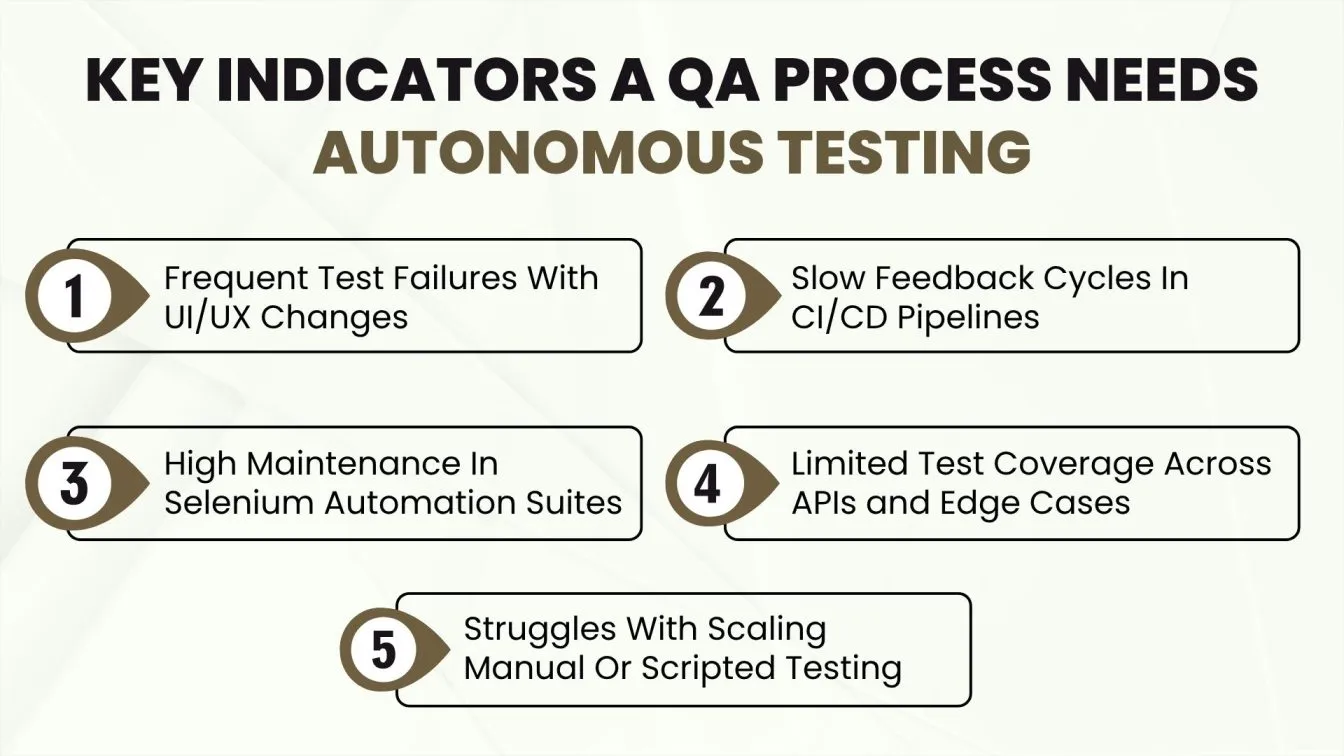
What’s next? Keep scrolling to find out:
🚀 What Is Autonomous Testing? Understanding its role in AI-driven test automation.
🚀 Autonomous Testing vs Traditional Test Automation: Key differences explained.
🚀 Key Features & Popular Platforms: Tools powering autonomous software testing.
🚀 Real-World Use Cases & Best Practices: Implementing autonomous testing across industries.
🚀 Challenges & Future Trends: Overcoming adoption hurdles and emerging innovations.
What Is Autonomous Testing?
Autonomous testing is an advanced approach in software quality assurance where testing processes are driven by artificial intelligence, reducing the need for manual input. Unlike traditional test automation, autonomous testing leverages self-learning algorithms to optimize test execution, maintenance, and data analysis. It significantly boosts testing efficiency in fast-paced development environments.
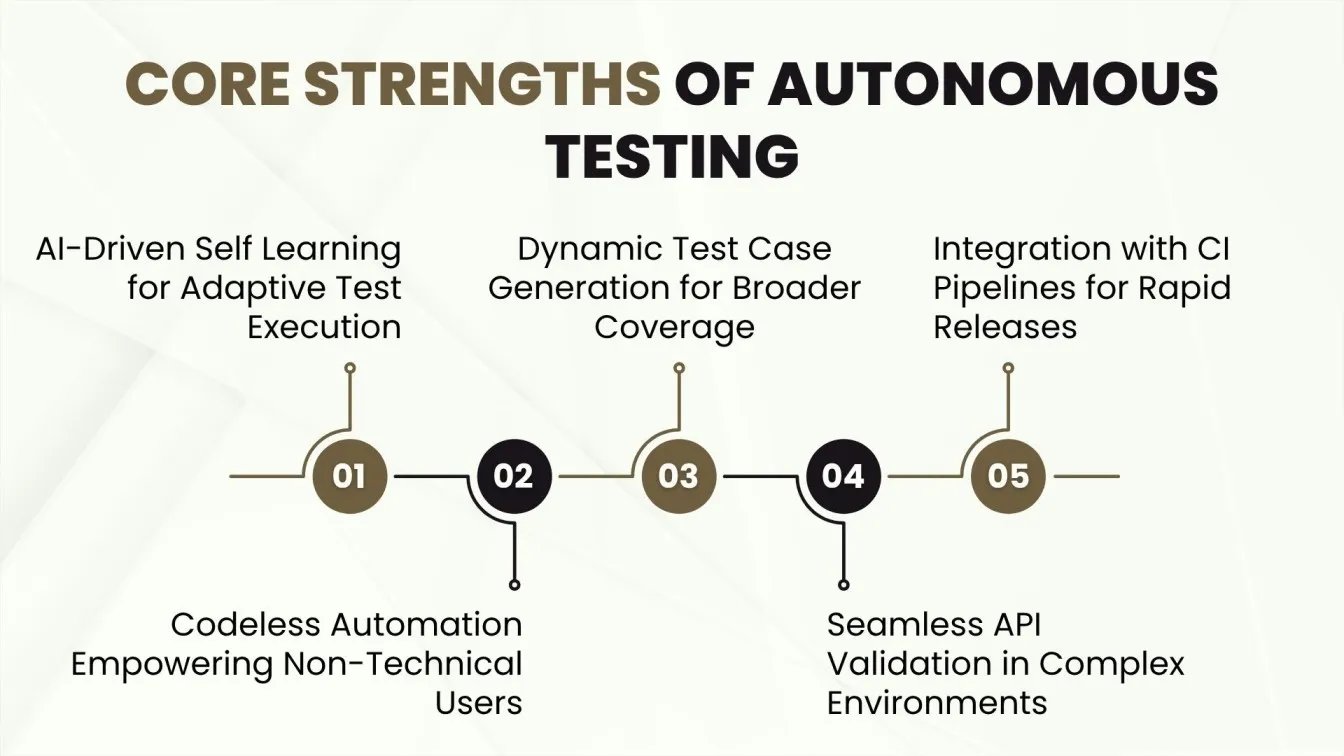
Key aspects of autonomous testing include:
- Uses intelligent test automation powered by AI and machine learning to adapt to code changes automatically.
- Enables codeless test automation, making it easier for non-technical users to create and maintain tests.
- Integrates well with continuous integration testing pipelines, supporting faster software releases.
- Enhances test coverage by dynamically generating test cases using AI based testing methods.
- Often implemented through autonomous testing services offered by leading QA providers.
- Seamlessly complements API test automation to validate backend systems.
- Plays a major role in AI software testing, ensuring smarter validation and quicker feedback.
How Autonomous Testing Differs from Traditional Test Automation
Autonomous testing and traditional test automation both aim to improve software quality, but they differ significantly in approach, adaptability, and intelligence. While traditional automation depends on scripted steps and manual oversight, autonomous testing incorporates artificial intelligence to dynamically manage, execute, and evolve tests.
Here’s a clear comparison:
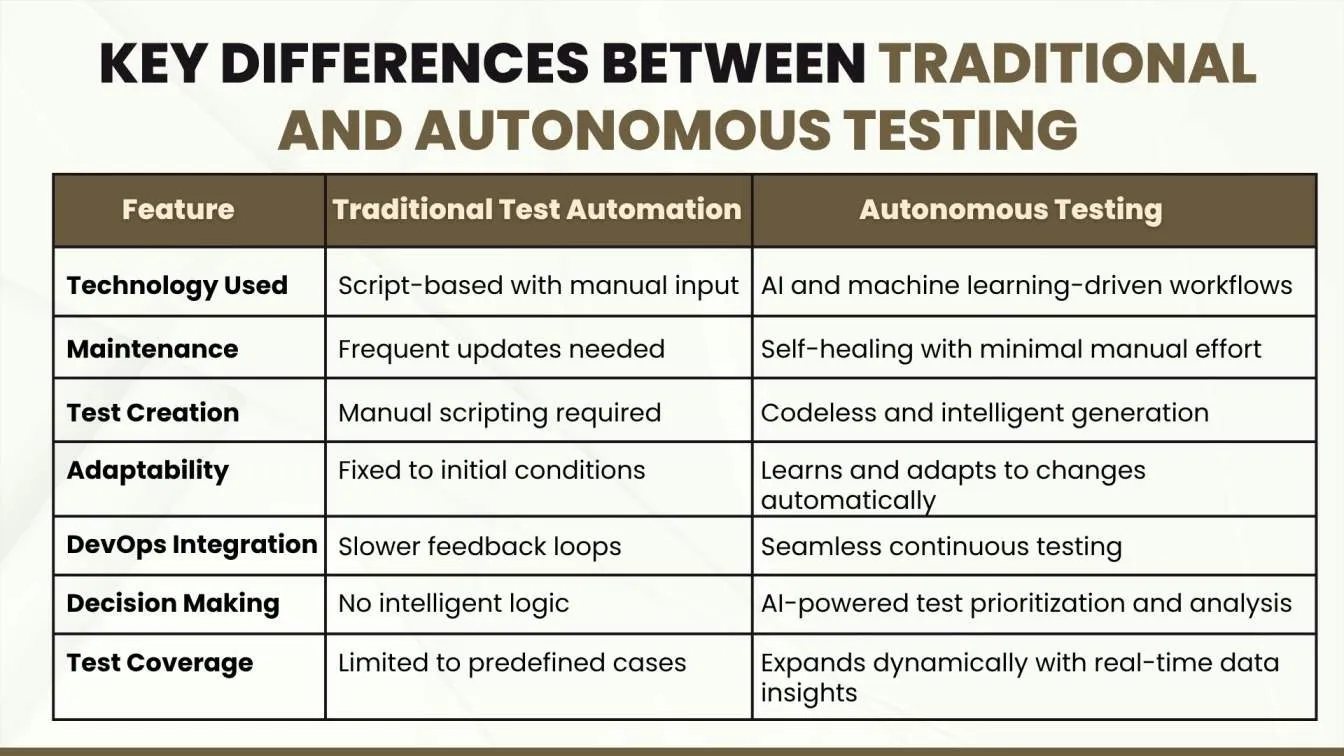
Key Features of Autonomous Testing
Autonomous testing revolutionizes traditional software testing by integrating intelligent automation and continuous testing strategies. It leverages advanced technologies to improve test accuracy, reduce manual effort, and accelerate delivery cycles. The key features make it an essential part of modern test automation frameworks and enhance the overall continuous testing strategy.

Here are the key features:
- AI-Powered Test Generation: Automatically creates and updates test cases using machine learning in test automation.
- Self-Healing Tests: Detects changes in the application and adapts test scripts without manual intervention.
- Codeless Test Automation: Enables non-technical users to design tests without coding skills.
- Integration with DevOps: Supports continuous integration testing and seamless pipeline integration.
- Advanced Analytics: Provides actionable insights and intelligent reporting to optimize test coverage.
- Scalability: Efficiently manages large-scale test suites with intelligent test automation.
- Cross-Platform Support: Works across different browsers and devices using Selenium automation techniques.
Top Tools Used in Autonomous Testing
Autonomous testing relies on advanced test automation tools that combine AI and continuous testing capabilities to deliver faster and more accurate results. These tools help teams implement intelligent test automation and improve their continuous testing strategy within DevOps continuous testing environments. Choosing the right tools is crucial for maximizing efficiency and coverage.
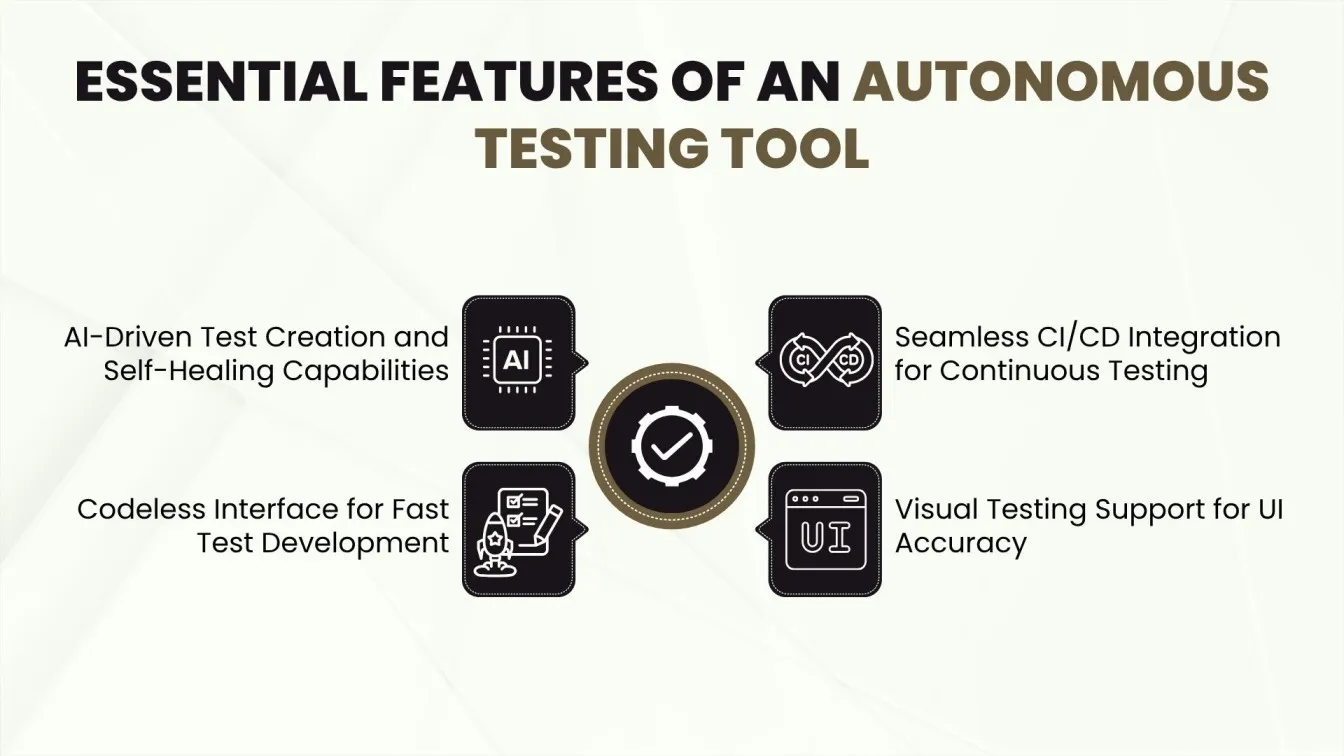
Here are some popular tools used in autonomous testing:
- QA Wolf: QA Wolf offers fully managed end-to-end automated testing with 80% coverage in four months, enabling parallel test execution and real user journey simulation.
- Ranorex: Ranorex supports cross-platform testing for desktop and mobile apps, featuring easy script generation, test recording, and compatibility with VB.NET and C#.
- TestComplete: TestComplete enables functional and UI testing for web and desktop applications, with object recognition and support for JavaScript, Python, and VBScript.
- IBM Rational Functional Tester: IBM RFT offers data-driven, regression, and GUI testing capabilities across Java, .NET, and web applications, along with collaboration features that support team-based workflows.
- Tricentis Tosca: Tricentis Tosca enables risk-based, codeless test automation with broad platform support and prioritization of critical test scenarios for faster feedback.
Benefits of Autonomous Testing in Software Development
Autonomous testing leverages AI-driven systems and machine learning models to transform traditional testing activities into more efficient, accurate, and scalable processes. It plays a key role in accelerating digital transformation by minimizing human involvement and enhancing continuous learning within testing frameworks.
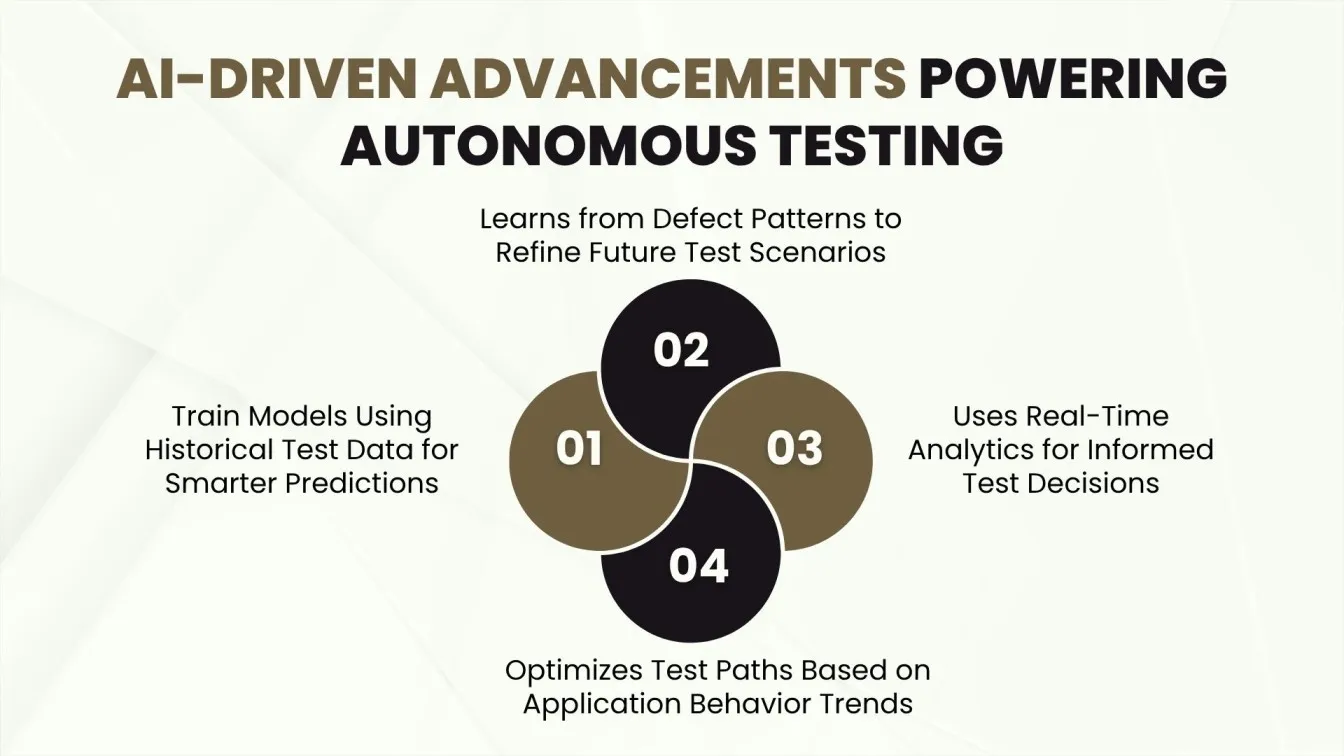
- Increased Test Coverage: Autonomous testing tools execute a wide range of test automation, including exploratory testing, ensuring more comprehensive test coverage.
- Faster Test Execution: AI-driven autonomous systems reduce manual testing efforts and speed up test automation cycles.
- Self-Healing Capabilities: Autonomous testing systems adapt to changes in application interfaces, minimizing test maintenance.
- Reduced Human Oversight: Intelligent test automation requires less human oversight, freeing teams to focus on complex scenarios.
- Enhanced Accuracy: Machine learning models improve defect detection and reduce false positives in test results.
- Supports Continuous Integration: Enables seamless integration with continuous integration testing and continuous testing strategies in DevOps pipelines.
Challenges Faced During Autonomous Testing Adoption
While autonomous testing offers significant advantages, adopting AI-driven testing systems and autonomous testing tools comes with its own set of challenges. Organizations transitioning from manual testing to intelligent test automation often face obstacles related to technology, skills, and integration.
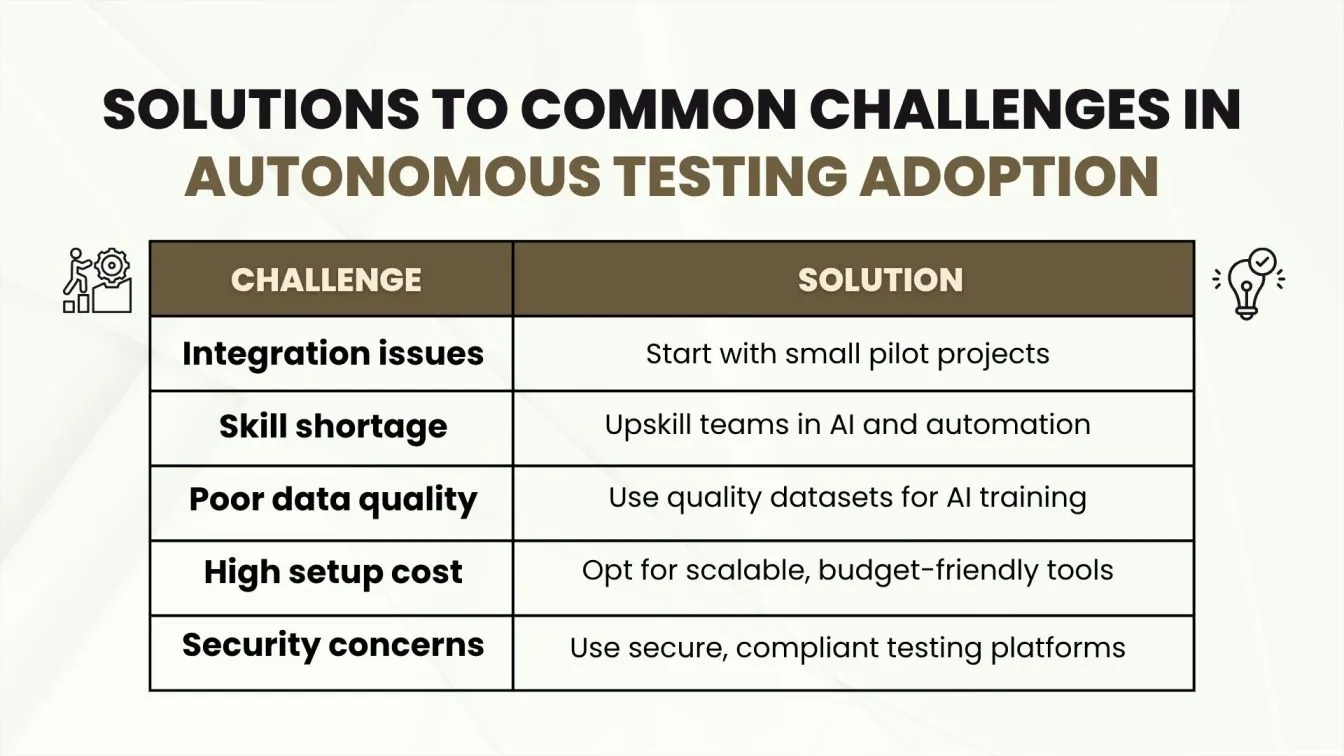
- Complexity in Implementation: Integrating autonomous testing tools with existing test automation frameworks and continuous integration testing pipelines can be challenging.
- Skill Gap: Limited expertise in machine learning models and AI testing automation affects smooth adoption.
- High Initial Investment: Setting up autonomous software testing requires investment in advanced AI-driven systems and continuous testing tools.
- Data Quality and Availability: Autonomous systems rely heavily on quality data and language models, which may not always be readily available.
- Resistance to Change: Human involvement and traditional manual testing culture can slow down the shift toward autonomous testing.
- Maintenance of AI Models: Continuous learning is necessary to keep AI models updated and effective in evolving software environments.
- Security Concerns: Incorporating blockchain technology and ensuring secure test automation frameworks add to the complexity.
Real-World Use Cases of Autonomous Testing Across Industries
Autonomous testing has become a game-changer in various industries, driving faster releases and higher quality software. Leveraging AI in software testing and intelligent test automation, businesses reduce manual testing efforts while improving accuracy. Here are some key use cases where autonomous testing excels:
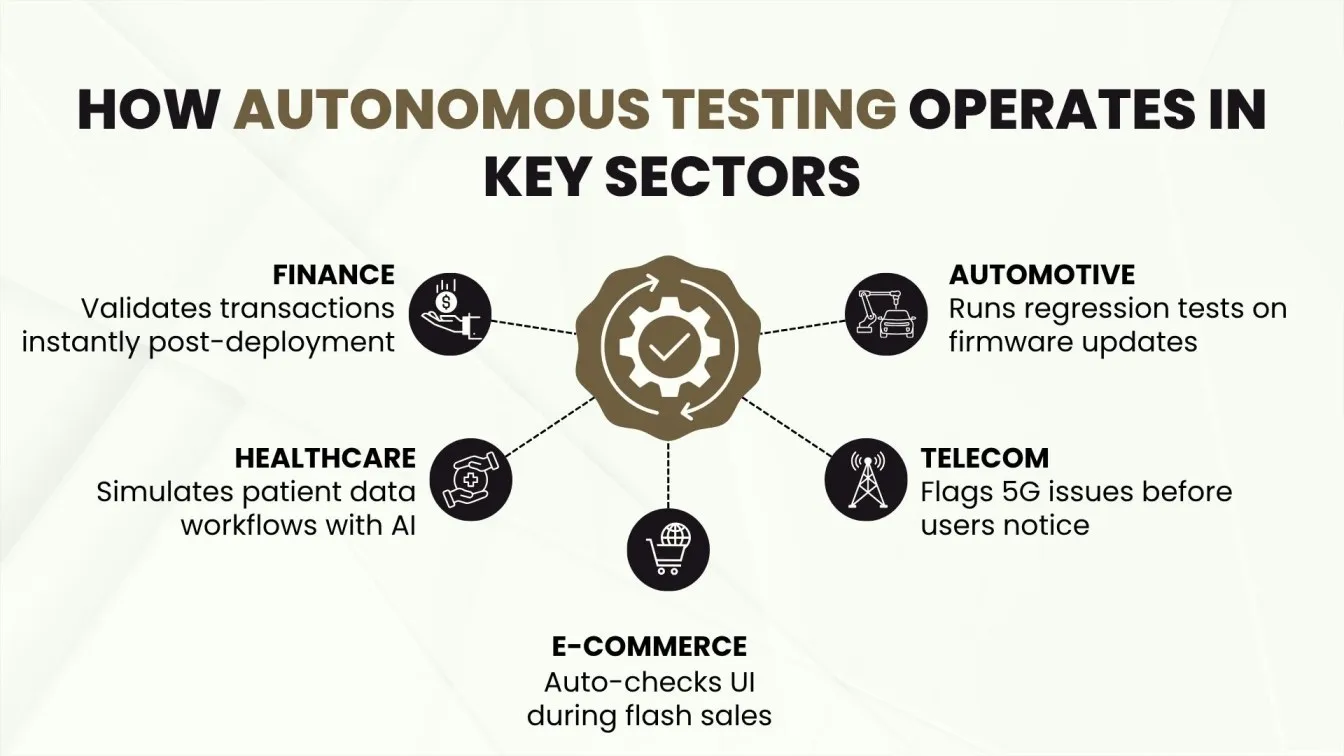
- Finance: Automation testing with Selenium helps detect security vulnerabilities quickly, ensuring compliance and secure transactions.
- Healthcare: AI testing services enable continuous testing framework implementation for reliable patient data management and system integrations.
- E-commerce: Selenium automation testing accelerates testing cycles during peak sales seasons, improving user experience and reducing downtime.
- Telecommunications: Continuous performance testing supports real-time monitoring of network services and API test automation for robust connectivity.
- Automotive: Autonomous testing systems enhance software validation for embedded systems and IoT devices using machine learning models.
Most Reliable Platforms for Autonomous Software Testing
Choosing the right autonomous testing platforms is crucial for seamless continuous integration testing and an efficient test automation strategy. These platforms combine AI testing automation with codeless test automation to simplify complex testing workflows and reduce manual effort. Here are some of the most reliable platforms used widely today
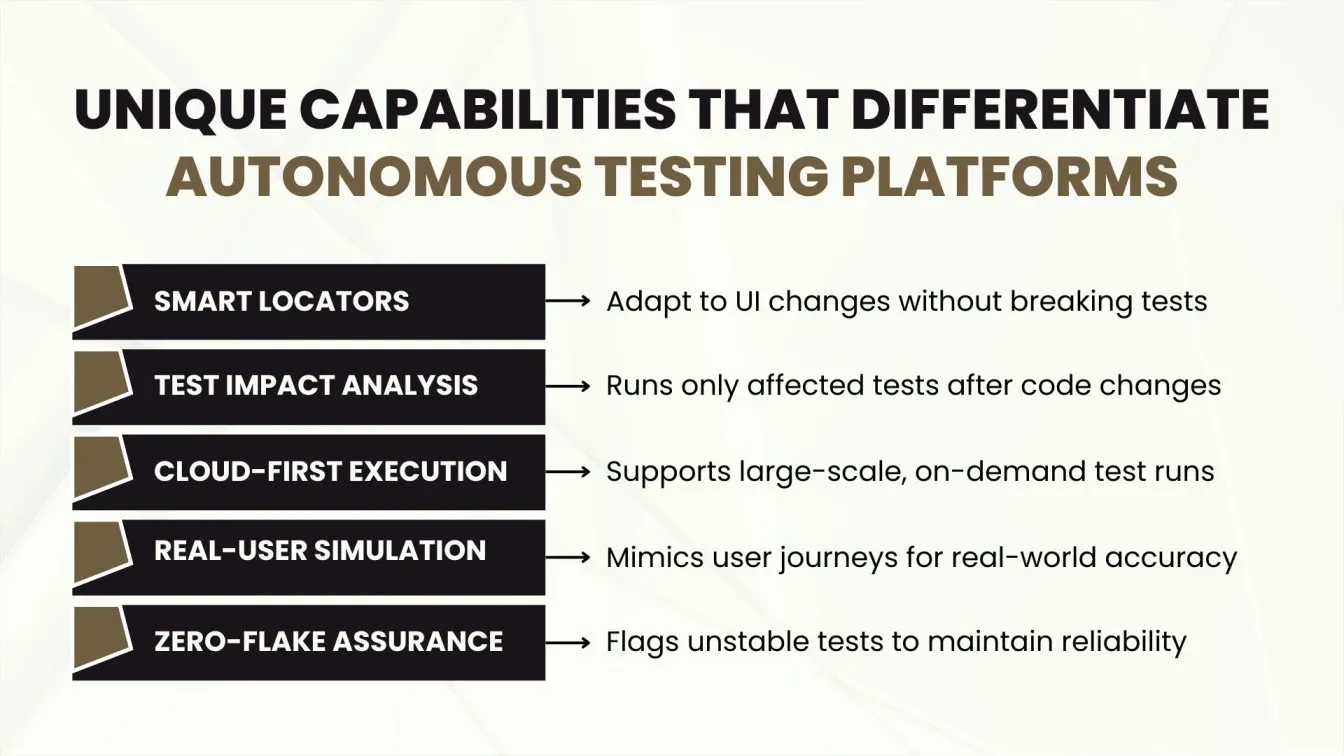
- Testim: Uses AI-driven systems and machine learning in test automation to enable fast, self-healing tests and improve test coverage.
- Functionize: Offers intelligent test automation with language models to create tests without coding, ideal for agile teams.
- Mabl: Integrates with continuous testing tools and provides autonomous software testing with proactive error detection.
- Tricentis Tosca: Combines test automation frameworks with AI-powered testing to streamline end-to-end testing and support continuous performance testing.
- Sauce Labs: Supports selenium automation testing and automation testing with selenium, delivering scalable cross-browser testing solutions.
Best Practices for Implementing Autonomous Testing
Implementing autonomous testing successfully requires a well-planned test automation strategy combined with the right use of test automation frameworks and continuous testing framework. Here are some best practices to ensure effective adoption
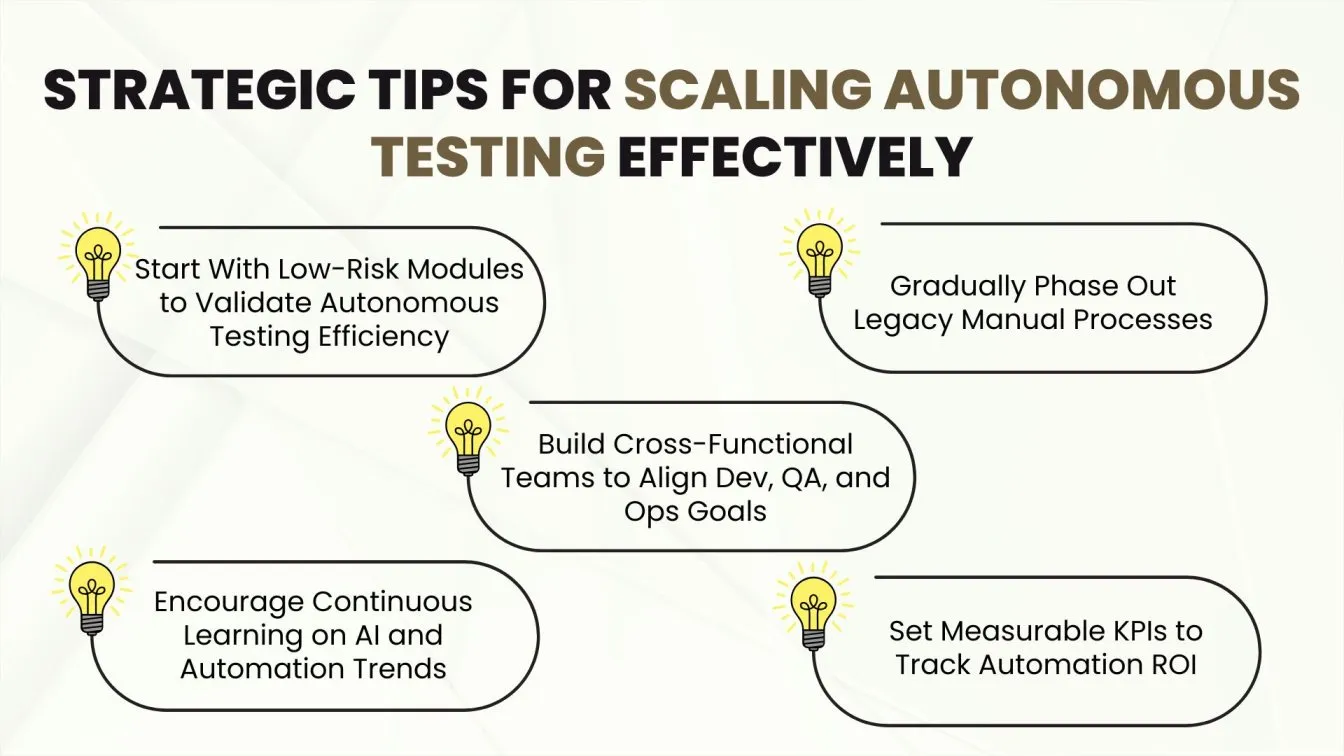
- Integrate AI in software testing: Use AI testing services to enhance test accuracy and reduce manual intervention.
- Adopt continuous performance testing: Ensure your tests run smoothly in a continuous integration testing environment to catch issues early.
- Prioritize codeless test automation: Empower teams with AI testing automation tools to speed up test creation and maintenance.
- Monitor and analyze results: Use real-time feedback to refine your continuous testing strategy and improve test coverage.
Future Trends in Autonomous Testing
The future of autonomous testing is shaped by evolving technologies and growing demands for faster, smarter test automation. Here are some key trends to watch.
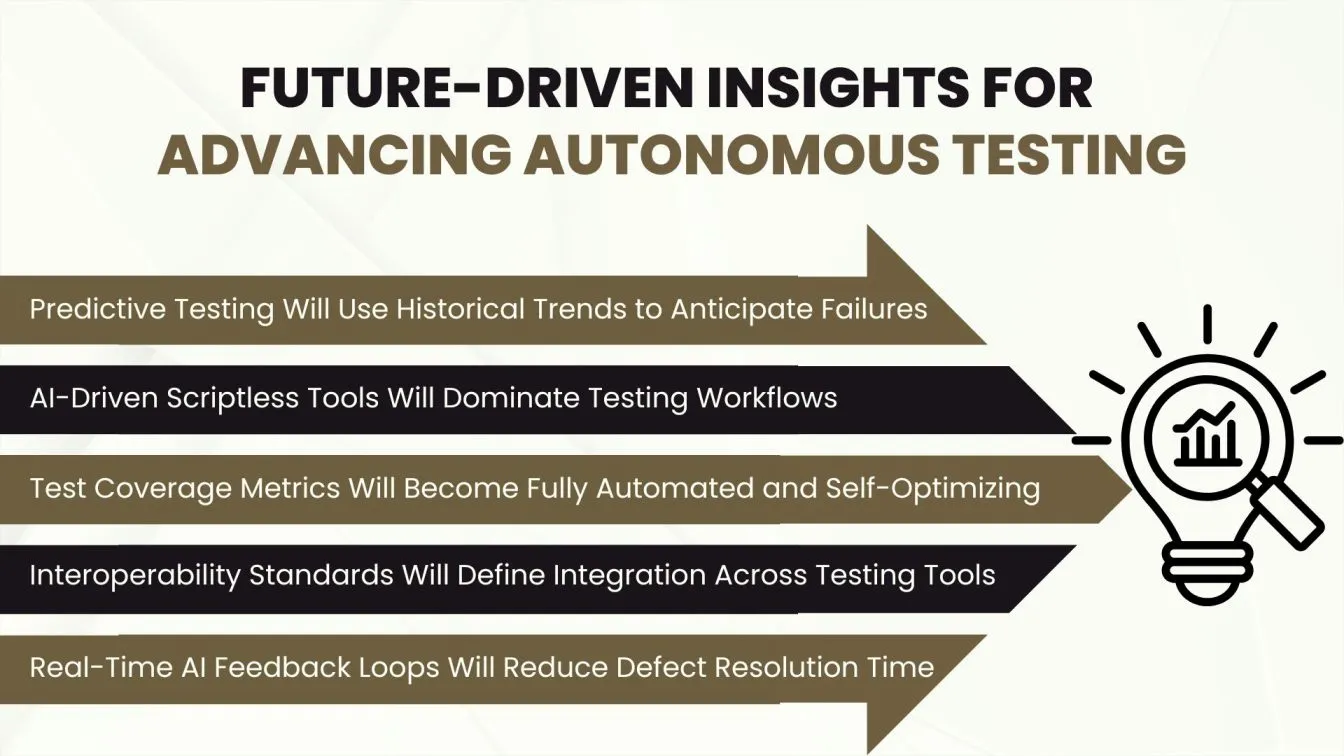
- AI in software testing will become more advanced, leveraging sophisticated machine learning models and language models to improve test creation and defect prediction.
- Increased adoption of continuous performance testing will ensure applications meet user expectations even under high loads.
- Expansion of automation testing with Selenium and enhanced Selenium test automation frameworks will support wider cross-browser and platform testing.
- Integration of blockchain technology could provide secure, transparent testing logs and traceability.
- The growth of AI testing services will enable more enterprises to adopt intelligent test automation with minimal human involvement.
- Focus on a continuous testing framework will deepen, supporting full continuous integration testing pipelines within DevOps environments.
Final Thoughts
Autonomous testing is transforming the way teams handle quality assurance by combining AI-driven systems, intelligent test automation, and continuous testing strategies. As organizations move toward faster releases and smarter workflows, adopting autonomous software testing ensures scalability, precision, and speed. With the support of codeless test automation and evolving machine learning models, it's the key to future-ready software development in an ever-advancing digital landscape.
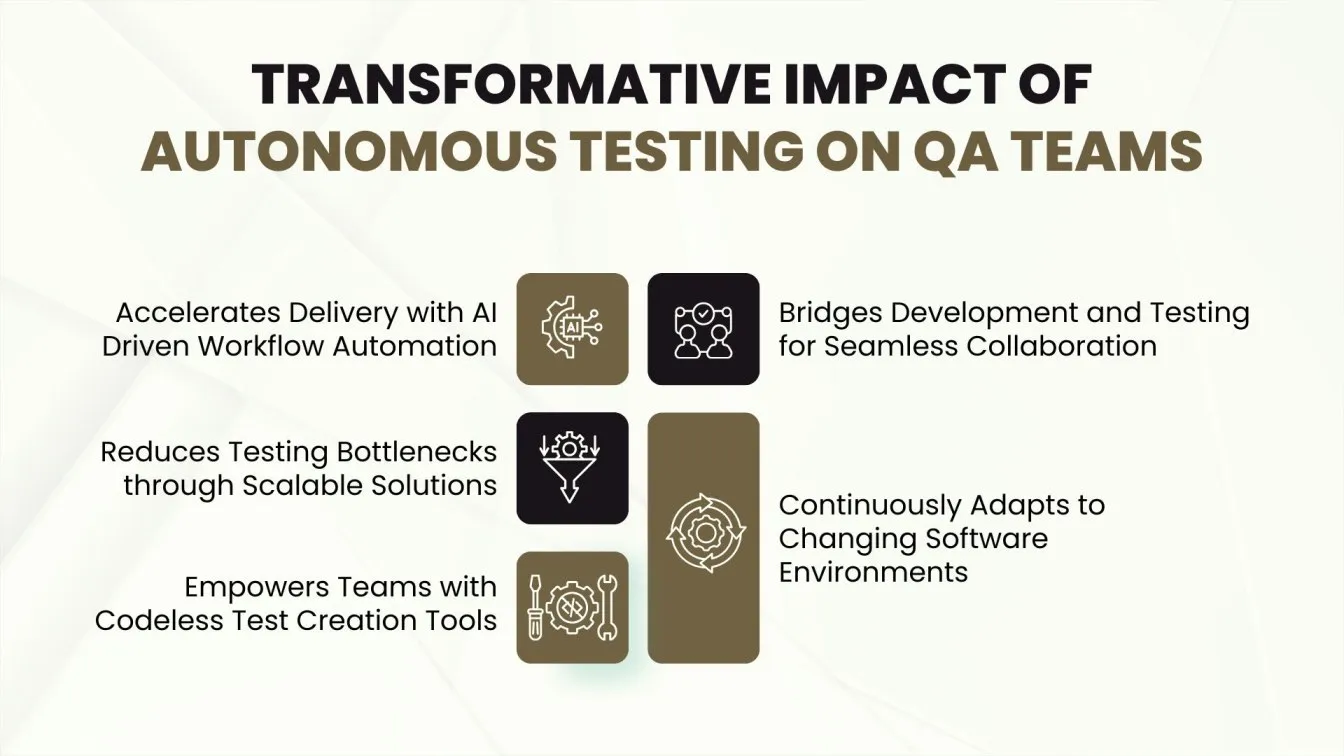
Frugal Testing, a trusted software testing service provider, offers advanced AI-driven test automation services, selenium automation testing services, and cloud-based test automation services to support digital transformation. Known for its innovation, Frugal Technologies Pvt Ltd delivers top-tier functional testing solutions and load testing service for modern enterprises. With proven expertise, it's recognized among top software testing companies in USA, helping businesses scale quality with smarter, faster, and reliable solutions.
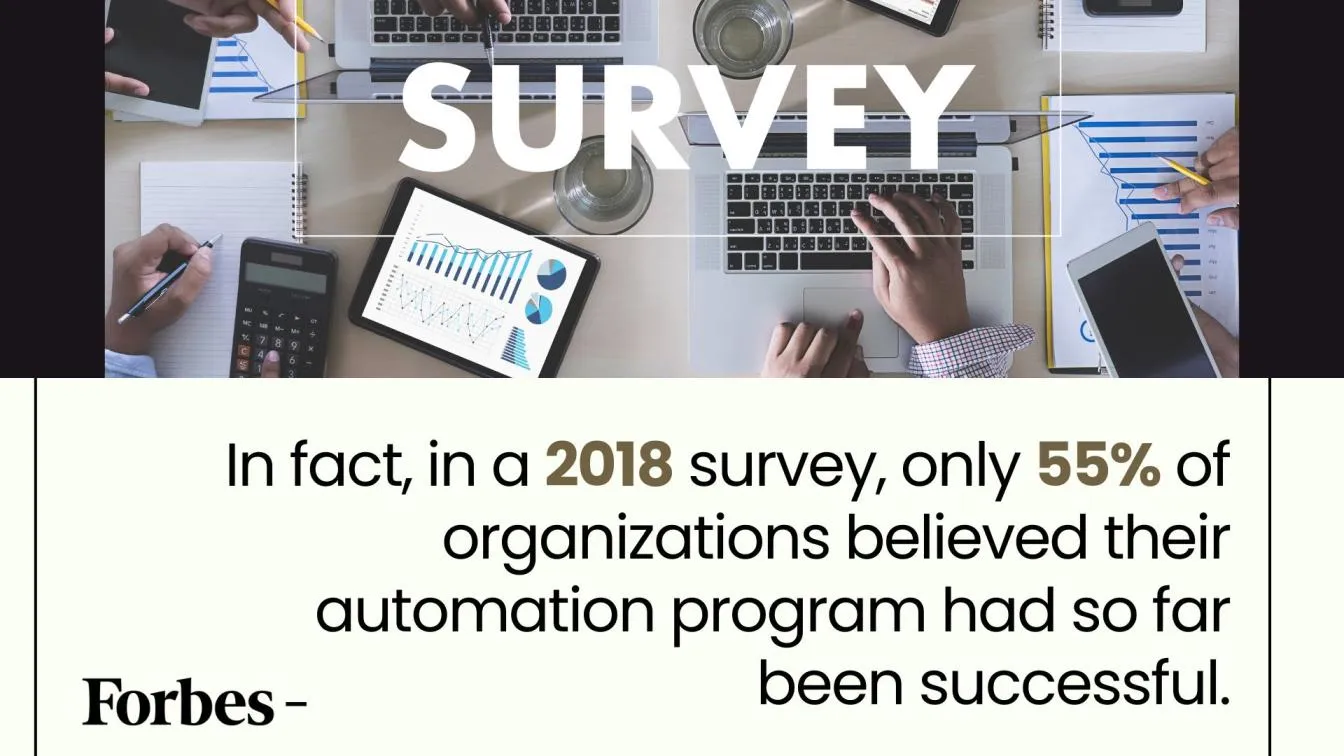
People Also Ask
How secure do autonomous testing platforms use data in cloud environments?
Autonomous testing platforms use strong encryption and comply with security standards to protect data in cloud environments.
What kind of reporting and analytics do autonomous testing platforms offer?
They provide detailed reports with real-time insights, test coverage metrics, and defect tracking for effective analysis.
What’s the average implementation time for enterprise-scale autonomous testing?
Implementation typically takes from a few weeks to several months based on project complexity and scale.
Can autonomous tests adapt to UI/UX changes automatically?
Many autonomous testing solutions use AI models to adapt automatically to UI/UX changes, minimizing manual intervention.
Are there open-source options available for autonomous testing?
Yes, open-source autonomous testing tools exist, but commercial options often offer more advanced features and support.





%201.webp)

